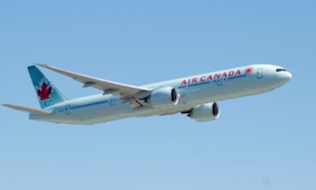

In 2009, the Air Canada pension plan was in dire straits with a $2.6 billion solvency deficit. A decade later, it has a surplus of more than $2 billion. The complete turnaround is in part due to a new investment team that joined in 2009 and transformed the pension fund’s investments.
With the $21 billion investment pot for Air Canada’s pensioners in good shape, the investment team is launching a new investment management firm called Trans-Canada Capital Inc., which is operating as a subsidiary of Air Canada.
The new corporation, which officially opened for business in February 2019, is offering its services to other institutional investors. It took on its first client this summer and launched a website in November.
Read: How Air Canada’s pension took off as Canada Post’s plan sank into deficit
And other pension plans are showing interest, says Vincent Morin, the president of the TCC, who initially joined Air Canada’s investment team in 2009.
Historically, the Air Canada pension plan was externally managed using a traditional 60/40 mix of public equities and bonds, he says. “We came off a very large deficit back then, which was quite problematic for the company. And we were able, over the years, to basically generate sufficient returns and reduce the risk and put the pension plan in a surplus position as we speak. So it was a great turnaround story that we have.”
Today, roughly 80 per cent of the TCC’s assets are managed internally and it has a much more diversified portfolio. In terms of asset mix, 85 per cent is in fixed income securities, 10 per cent is in equities, 20 per cent is in alternatives — essentially real estate, infrastructure, private debt and private equity — and 10 per cent is in its portable alpha program, which is hedge funds. The total is 125 per cent because the plan uses leverage to increase its bond allocation in order to hedge interest rate risk.
The investment team uses a liability-driven strategy for Air Canada’s pension. “With low yields it translates into higher liabilities and we want to match that as much as possible, but always in a very actively managed approach,” says Morin.
Read: Is Air Canada’s move to enter annuity market the start of a new pension trend?
In the 26 quarters to Dec. 31, 2018, the plan added value above its benchmark, he notes. “When you compound that over a long period like that, it translates to a very big amount, which significantly helped the turnaround of the pension plan from a deficit to a surplus.”
The TCC is set up so a pension fund can hand over its whole portfolio for management, but it can also choose to just buy into a particular fund. “For sure, if a pension fund would like to give [us] their whole pension fund, we’d be very happy to manage it and we are structured to do it because, basically, for Air Canada’s pension plan we manage all the asset classes,” says Morin.
Air Canada is currently marketing a multi-strategy hedge fund, two fixed income funds and a fund of hedge funds. And it will be offering more fund options in the future.
This article originally appeared on Benefits Canada‘s companion site, the Canadian Investment Review.
